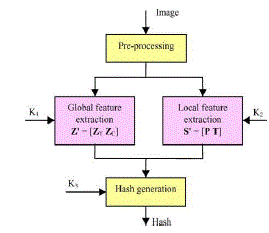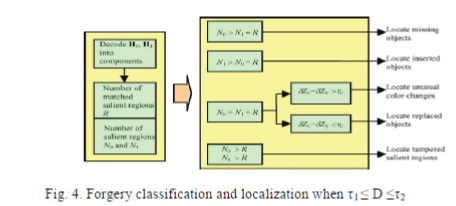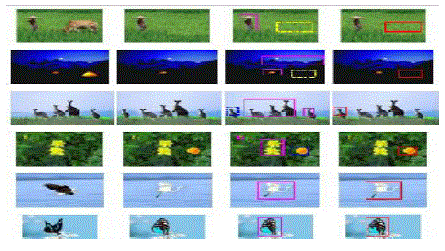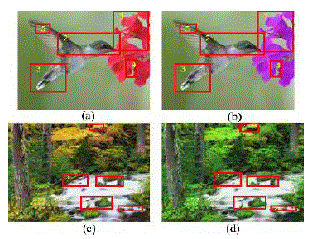Keywords
|
| Square Patch, Circular Polarization, Textile Material |
INTRODUCTION
|
The micro strip patch antenna (MPA) consists of a conducting patch of any planar or non planar geometry on one side
of a dielectric substrate with a ground plane on the other side [1]. Radiation characteristic is an important characteristic
of a patch antenna. The proposed antenna is suitable to wear so it is termed as wearable antenna [2], [3]. It used jeans
substrate textile material. The direct communication is performed by this antenna. The requirement of this antenna is
because of its small size, low cost and free from installation. Textile material forms interesting substrate because fabric
antenna can be easily integrated into clothes [4], [5], [6]. The substrate of the designed antennas was made from jeans
textile material while the radiating element and ground plane are made from copper tape. Use of this textile material for
the development of flexible wearable antenna [7], [8] has been swift due to the miniaturization of wireless devices and
it has a very low dielectric constant which improves the impedance bandwidth of antenna and decease the surface wave
losses. The proposed antenna material has some important features that are dielectric constant (relative permittivity)
1.7, loss tangent less than 0.025 and thickness 1mm. The dielectric properties depend on the frequency, temperature,
and surface roughness and also on the moisture content, purity and homogeneity of material. |
The micro strip antennas are good candidates for body bone application. Wearable antennas are of planar structure,
flexible conductive material in patch and ground plane and flexible dielectric materials. The wearable antenna is thus
the bond that integrates cloth into the communication system, making electronic device less obstructive. To achieve
good results, wearable antennas have to be thin, lightweight, low maintenance, robust, inexpensive and easily
integrated in radio frequency circuit. The applications of this antenna are navigation, military, body centric
communication, medical emergency |
ANTENNA DESIGN
|
The structure of the proposed antenna on the jeans material is shown below. A square patch of size 46.6 X 46.6 mm2 is
used to design this antenna. A quarter wave transformer of length 31.275 mm and width 2.6 mm is used to feed the
antenna. A transmission line of length 10mm and width 4.8mm is used at the edge of the quarter wave transformer
where a port of 50 Ω impedance is implemented. Two opposite corners of the square patch are trimmed to achieve
circular polarization. Truncation of 5mm in length and 5mm in width of square patch has been implemented at two
opposite corners of the square patch. To implement the antenna jeans substrate textile material has been used whose
parameters have been shown in Table1: |
In proposed antenna, inset feeding with quarter wave transformer has been used for proper impedance matching. The
impedance of the quarter wave transformer is calculated by the formula i.e. |
| Z0=√ZAZP |
| Where, |
| Z0= Impedance of quarter wave transformer |
| ZA= Impedance of the antenna at edge |
| ZP= Impedance of the transmission line at the port (50 Ω). |
RESULT AND DISCUSSION
|
The proposed antenna has been simulated on Zealand IE3D software. Fig. 2 shows return loss vs. frequency plot of the
antenna. From this plot it is clear that return loss of the antenna at 2.4 GHz is -20 db approximately which shows a
good result. After Simulation, parameters of proposed antenna are shown below: |
 |
Fig. 4 shows axial ratio vs frequency plot and from the plot it can be shown that at 2.4 GHz axial ratio is approx 3.0 db
which indicates that that antenna achieves circular polarization at 2.4 GHz. |
CONCLUSION
|
In this paper, the proposed antenna has been designed at jeans substrate textile material at 2.4 GHz. The used textile
material has a very low dielectric constant 1.7. The low dielectric constant reduces the surface wave losses. Therefore, decrease the dielectric constant increase the impedance bandwidth of the antenna. Simulation results of the proposed
antenna are in good agreement. This antenna can be used for navigation, military communication, body centric
communication and medical emergency. |
 |
| Table 1 |
|
| |
Figures at a glance
|
 |
 |
 |
 |
 |
| Figure 1 |
Figure 2 |
Figure 3 |
Figure 5 |
Figure 5b |
|
| |
References
|
- Garg, R.P.Bhartia, I.Bhal, and A.Ittipiboon, Microstrip Antenna Design Handbook, Artect House INC., Norwood, 2001.
- I .Locheretal, ”Design and Characterization of Purely Textile Patch Antenna, ” Advanced packaging, IEEE Transaction on, vol. pp. 777-788, 2006.
- Rais, N.H.M.P.J. Son, F. Malek, S.Ahmad, N.B.M. Hashim, and P.S. Hall “A Review of Wearable Antenna” Antennas & propagation conference, Lough borough, november 2009.
- P.E.Massey “GSM fabric antenna for mobile phones integrated within clothings,”APS,2001.IEEE vol3,8-13 july 2001 page(5): 452-455 vol.3.
- Sankarlingam S. and B.Gupta. “Development of textile antennas for body wearable application investigations on their performance under bent condition” Progress in Electromagnetic Research B, volume22, 53-71, 2010.
- Klenm, M. and G. Troester, “Textiles Transaction on Antennas and Propagation”, volume 54, no. 11, November 2006.
- Masotti D; costanzo, A; Adami; S. “Design and realization of a wearable multi- frequency RF Energy harvesting system” In proceedings of the 5th European conference on antennas and propagation ( EVCAP ), Rome, Italy 11-15 April 2011; PP. 517-520.
- M. Aldrigo, A. Mcostanz, D. Masotti, C. Galassi, “Exploitation of a Novel Magnelo Dielectric Substrate for Miniaturization of Wearable VHF Antennas” Mater.Lett 2012, 87, 127-130.
- Wen-Shyang Chen and Horng- dean –“compact circularly polarized pentagonal shaped microstrip antenna with bent losses” antenna and propag. Society international symposium, 2001 IEEE page (s): 424-426 vol.3
- Noro, T. And Kazama, Y. “A novel wideband circular polarization microstrip antenna combination of different shaped antenna element ,” antenna and propagation society international symposium, 2005 IEEE volume: 3A publication year ;2005, page(s): 467-470 vol 3A.
- Chair R.A.A.Kishk, and K.F.Lee, “Ultrawideband Coplanar wave guide fed rectangular patch antenna,” IEEE antennas wireless propag. Lett, Vol.3, 227-229, 2004
- Yeo, J., Y. LEE, and R. mittra, “Wideband slot antennas for wireless communication,” IEEE Proc.- Microwave Antennas and Propagation, Vol.151, 351-355, 2004
|